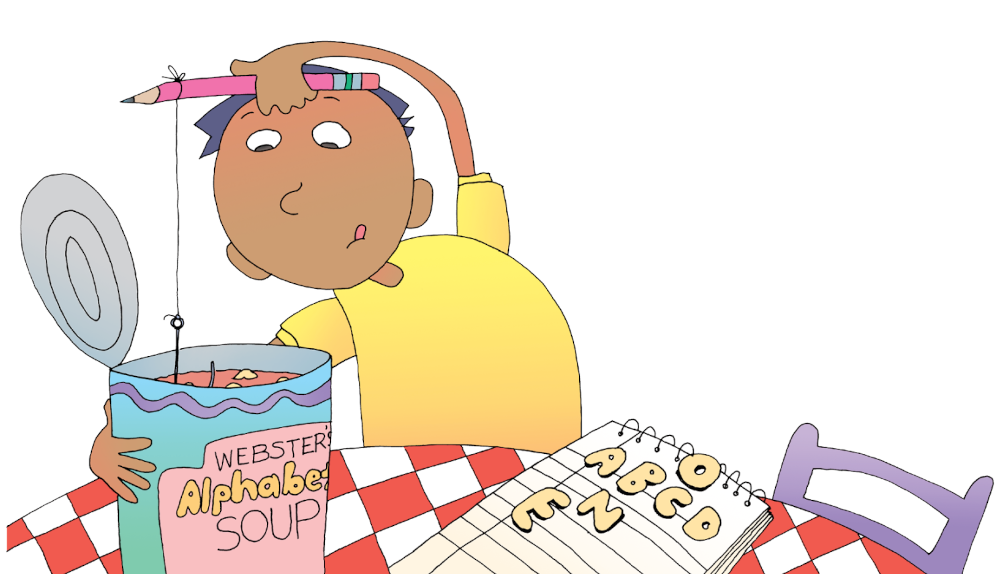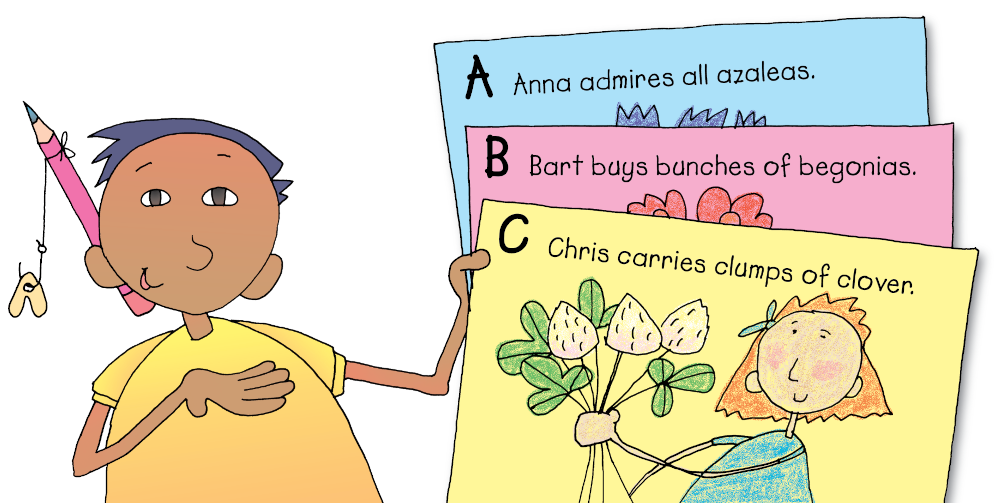WT 109
Page 109
Writing Alphabet Books
Have you ever had fun with a jump-rope jingle?

When you put a funny jingle or other information in ABC order, you are writing an alphabet book.
Going From A to Z
There are alphabet books about every subject— airplanes, baseball, cats, dogs, energy, fish, geography. . . . See how easy it is? On the pages that follow, you can learn more about alphabet books and how to begin one of your own.

WT 110
Page 110
Sample Alphabet Facts
Here are parts of two alphabet books. Carlos organized his book by finding a dinosaur for each letter. He gave three facts for each dinosaur: the meaning of its name, its size, and its eating habits.
Dinosaur ABC’s
Allosaurus means “different lizard.” This dinosaur was 34 feet long and weighed 4 tons. It was a meat eater.
Brachiosaurus means “arm lizard.” It was 85 feet long, weighed 70 tons, and ate plants.
Cetiosaurus means “whale lizard.” It was 45 feet long, weighed 10 tons, and was a plant eater.
Julie found 26 names of things in outer space—from A to Z. Then she found two facts to share about each thing. (This is the middle part of her alphabet book.)
Outer Space ABC's
L The Little Dipper has seven stars and is shaped like a dipper. The North Star is part of the handle.
M The Milky Way is a galaxy with billions of stars. The earth and sun are in the spiral arms of the Milky Way.
N A nebula is a giant cloud of gas and dust. Stars and planets are born in a nebula.
WT 111
Page 111
Writing an Alphabet Book
Prewriting
Choose a Subject 🟪 Think of a subject with lots of examples or parts, such as dinosaurs or airplanes.
List Related Topics 🟪 Make a list of topics, A to Z, about your subject. Carlos started writing the names of different dinosaurs in his list.
Study Your Topics 🟪 Learn as much as you can about your topics. Write down notes as you read and learn.
Writing a Draft
Write the Facts 🟪 Give the same kind and number of facts for each topic. Carlos gave the meaning of each dinosaur name. He also told about each dinosaur’s size and eating habits. Julie gave two important facts for each of her outer-space topics.
State Your Ideas 🟪 Write interesting sentences for each topic.
WT 112
Page 112
Revising
Read and Review 🟪 Make sure that you have used the same kind of facts for each topic. Also make sure that all of your sentences are clear.
Editing & Proofreading
Check for Errors 🟪 Check the spelling of each of your topics. Also check your sentences for capital letters and punctuation marks.
Plan Your Final Copy 🟪 Decide how the final copy of your book will look. Are you going to include pictures? Will your final copy be handwritten, or are you going to design your book on a computer? (See page 42 for bookmaking directions.)
WT 113
Page 113
An Easy Alphabet Book
Here’s how Jack planned his ABC book about flowers. You can make your book about a topic of your choice.
First Step 🟪 Decide on a topic for your book. Then make three ABC lists using this chart. Here are Jack’s three lists:
|
People’s Names |
Action Words |
Names of Flowers |
|
Anna Bart Chris |
admires buys carries |
azaleas begonias clover |
Next Step 🟪 Write a sentence using “A” words for the “A” page, “B” words for the “B” page, and so on. On each page, draw a picture to go with the sentence. Jack drew the flower to match.
